Question Number 1453 by 112358 last updated on 06/Aug/15
![Show that Σ_(r=1) ^n e^(rx) =((e^x (e^(nx) −1))/(e^x −1)) (∗) if e^(rx) =cos(irx)−isin(irx) and x≠0 . [Do not treat (∗) as a GP to directly obtain the result.]](https://www.tinkutara.com/question/Q1453.png)
Answered by 123456 last updated on 13/Aug/15
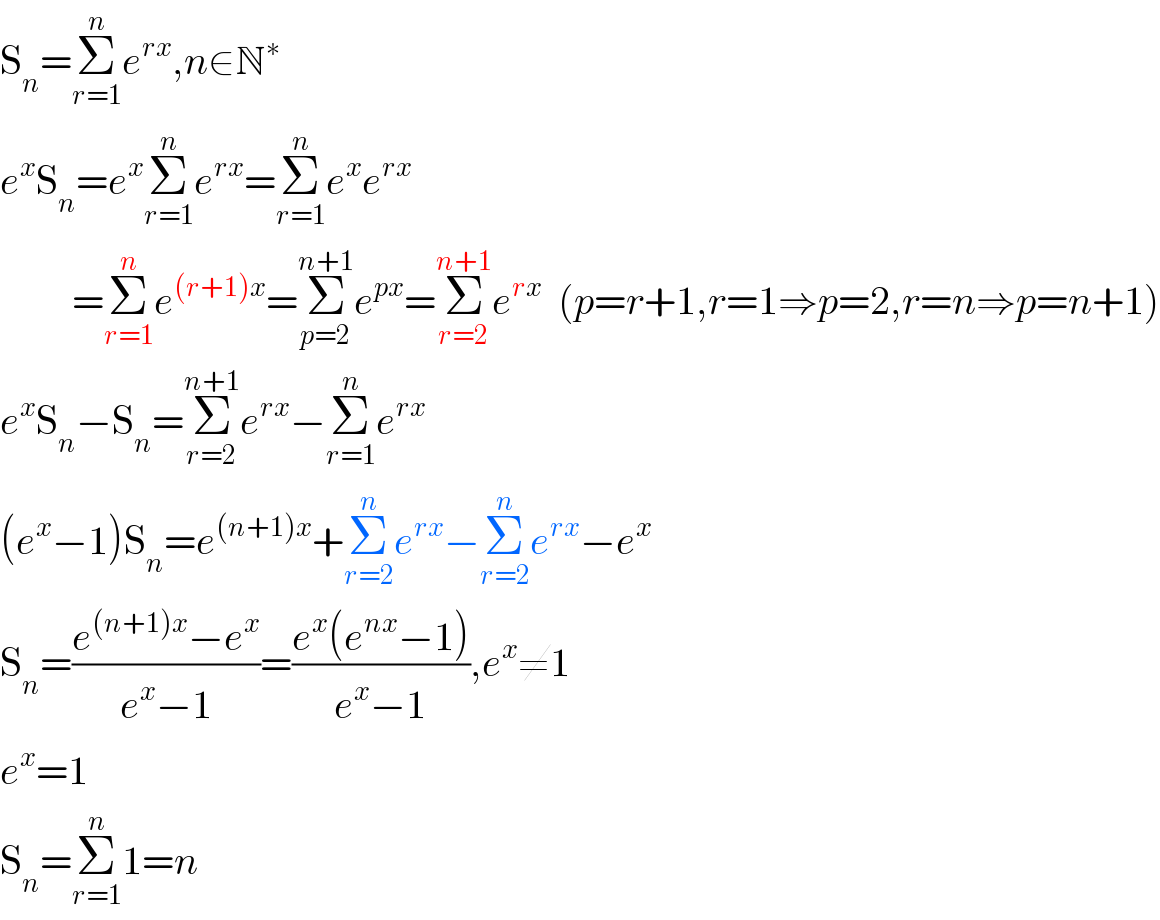
Commented by 112358 last updated on 06/Aug/15

Commented by Rasheed Ahmad last updated on 13/Aug/15
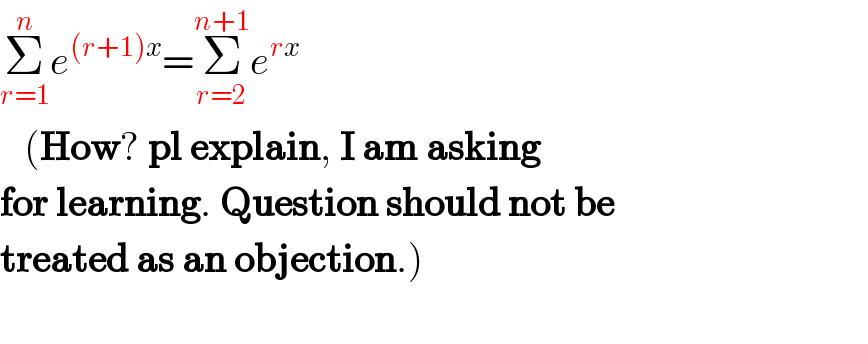
Commented by 112358 last updated on 13/Aug/15
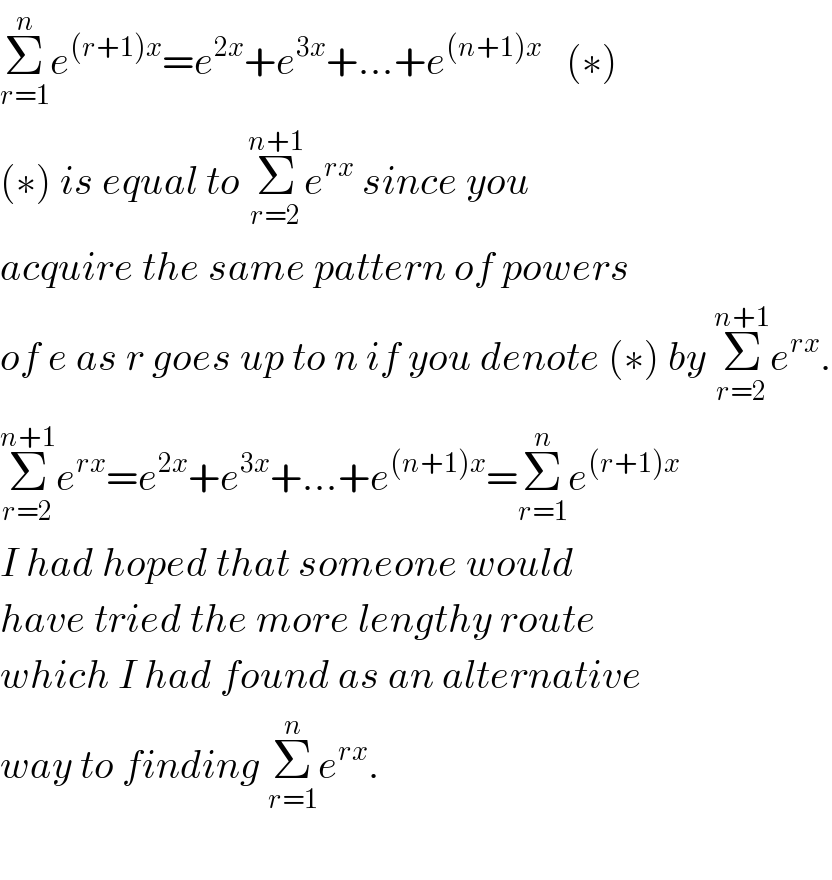
Commented by Rasheed Ahmad last updated on 13/Aug/15

Commented by 123456 last updated on 13/Aug/15
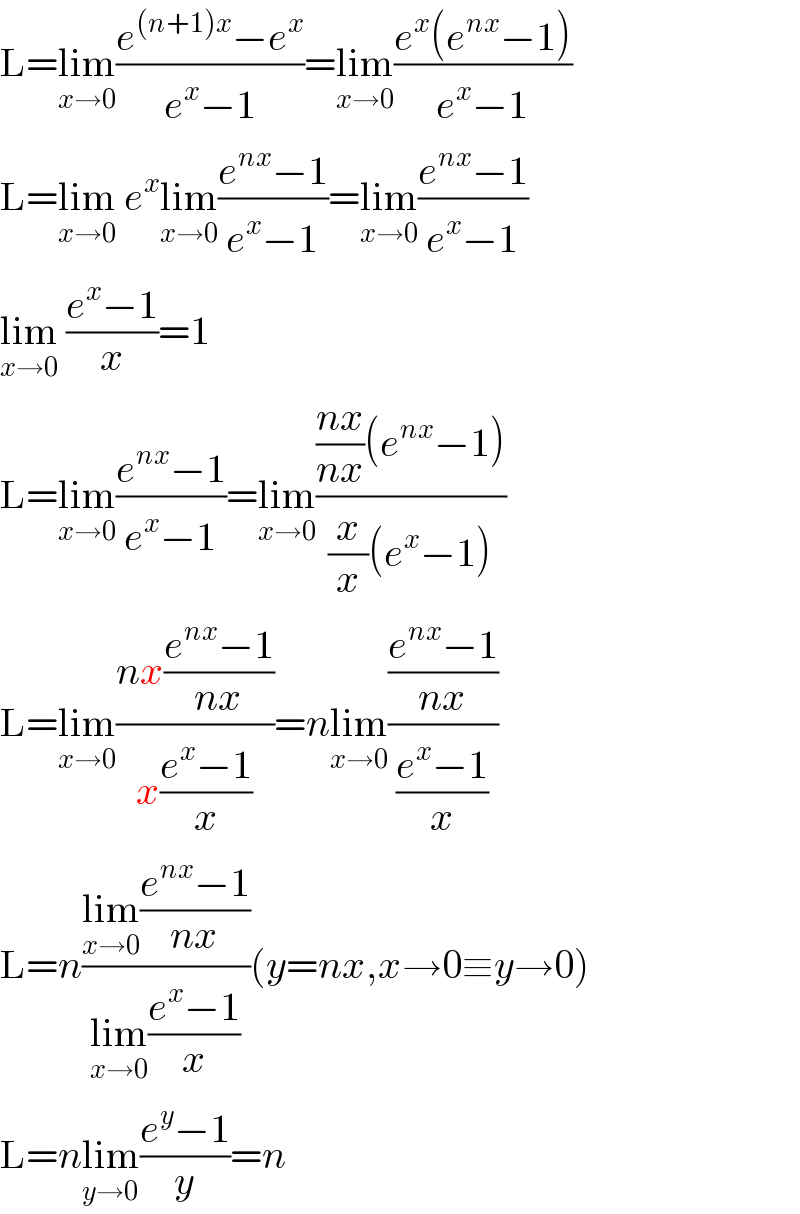
Commented by 112358 last updated on 13/Aug/15
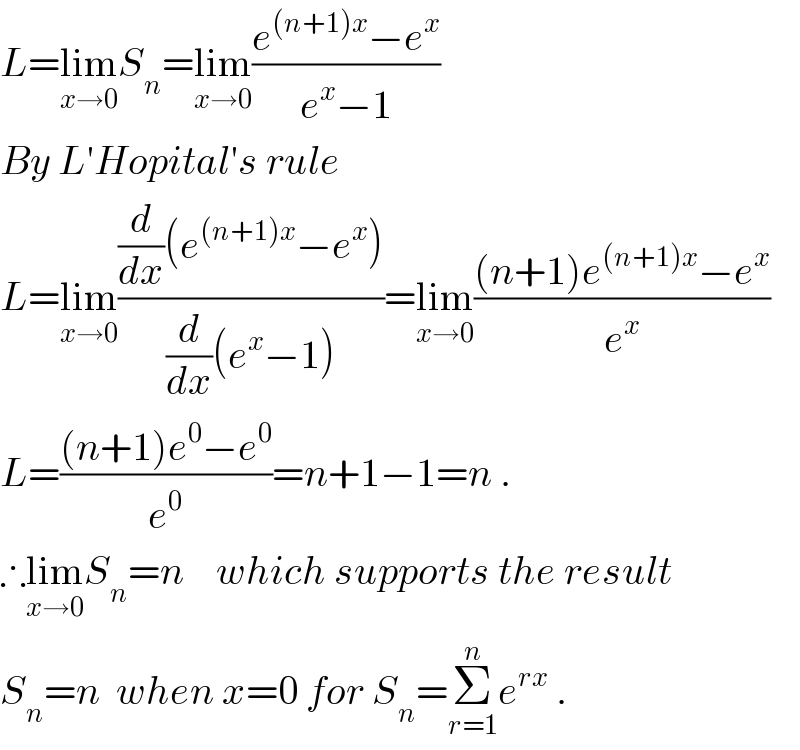
Commented by 112358 last updated on 13/Aug/15

Commented by 123456 last updated on 14/Aug/15
![F(a)=lim_(x→0) ((a^x −1)/x),a>0,a≠1 x=log_a (t+1) x→0≡t→0 F(a)=lim_(t→0) ((a^(log_a (t+1)) −1)/(log_a (t+1))) F(a)=lim_(t→0) (t/(log_a (t+1))) [log_a (t+1)=((ln (t+1))/(ln a))] F(a)=lim_(t→0) ((tln a)/(ln (t+1)))=lim_(t→0) ((ln a)/((1/t)ln(1+t))) F(a)=((ln a)/(lim_(t→0) ln(1+t)^(1/t) ))=((ln a)/(ln lim_(t→0) (1+t)^(1/t) )) fundamental limit:lim_(t→0) (1+t)^(1/t) =e F(a)=((ln a)/(ln e))=ln a a=e F(e)=1](https://www.tinkutara.com/question/Q1495.png)
Commented by 112358 last updated on 14/Aug/15

